Capsicum annum ‘Sweet Banana’ and others
I’m a practical-minded vegetable gardener, and that’s why I favor banana peppers.
This type of Capsicum annuum earned its fruity name by producing light or bright yellow, tapered peppers. Some cultivars are sweet and others are hot.
Let me share the practical benefits right up front.
These prolific peppers are ready to harvest about 60 days from transplant for the light yellow fruits, or 70 to 80 days if you wish to pick more fully developed orange or red-hued fruits.
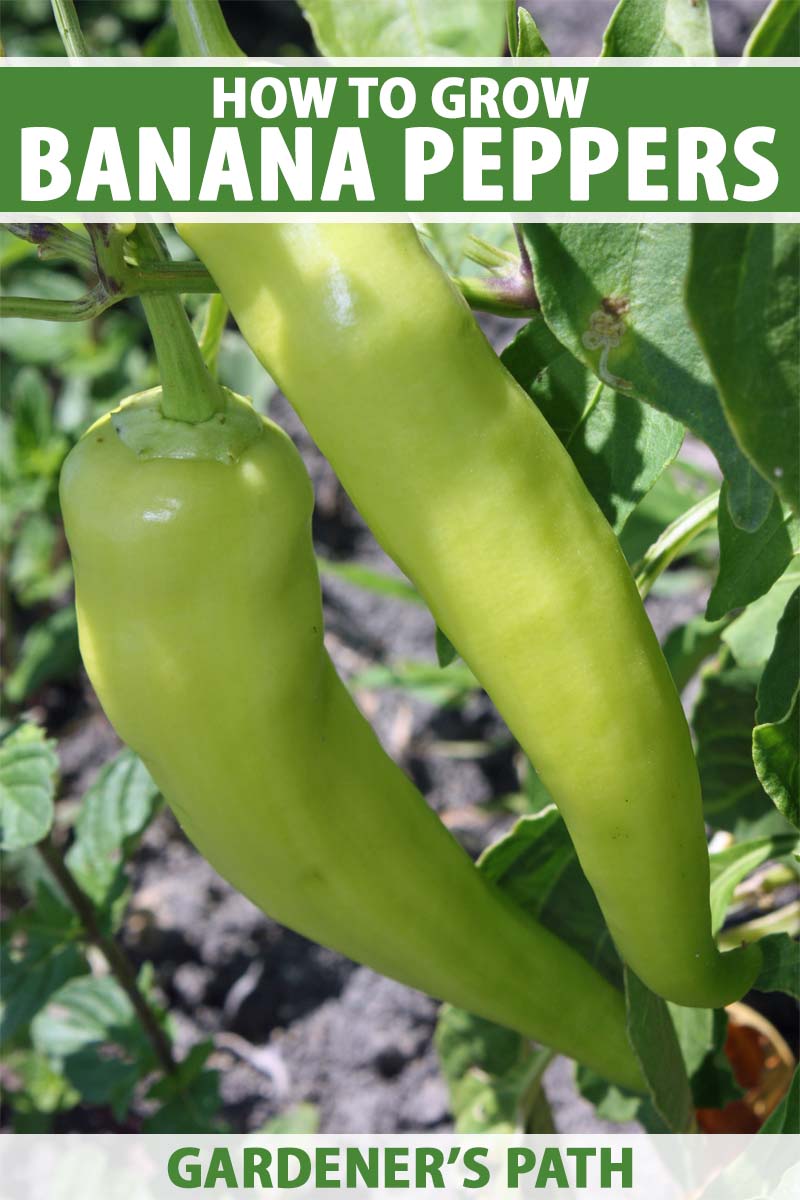
We link to vendors to help you find relevant products. If you buy from one of our links, we may earn a commission.
That maturity rate is similar for cayennes, cubanelles, and serranos, but it beats super hot varieties like habanero to harvest.
If you love hot, spicy garden veggies but live where the growing season is abbreviated by cold weather, this could be the type of pepper for you!
Fewer days to maturity also minimizes water and weeding chores and may allow you to be the first on the block to a pepper harvest. I love this trait, which I guess makes me competitive in addition to being pragmatic!
Of course, there are some tradeoffs for all those advantages. Sweet banana pepper flesh isn’t as sweet as that of most bell varieties, so it isn’t quite as desirable on the crudite tray or in the lunchbox.
The tapered ends of the five- to six-inch-long fruits aren’t as convenient or attractive to use as jalapenos, either, if you intend to stuff your peppers with cream cheese to fry as “poppers.” But they’re still delicious when you prepare them that way.
Want to grow a trendy hot variety to singe the roof of your mouth? Hungarian hot wax types have a Scoville rating of “only” 5,000 to 10,000, so die-hards would do better to grow ghost peppers instead.
But if you’re here for an easy-care pepper that offers quick-growing mild or hot options, read on. Here’s what you have to look forward to:
What You’ll Learn
What Are Banana Peppers?
Like all of the pepper plants home gardeners love to grow, banana aka wax peppers are members of the nightshade family, right in there with tomatoes, eggplants, potatoes, and the like.
They are part of the C. annuum species that includes both hot chilis and sweet bell types.
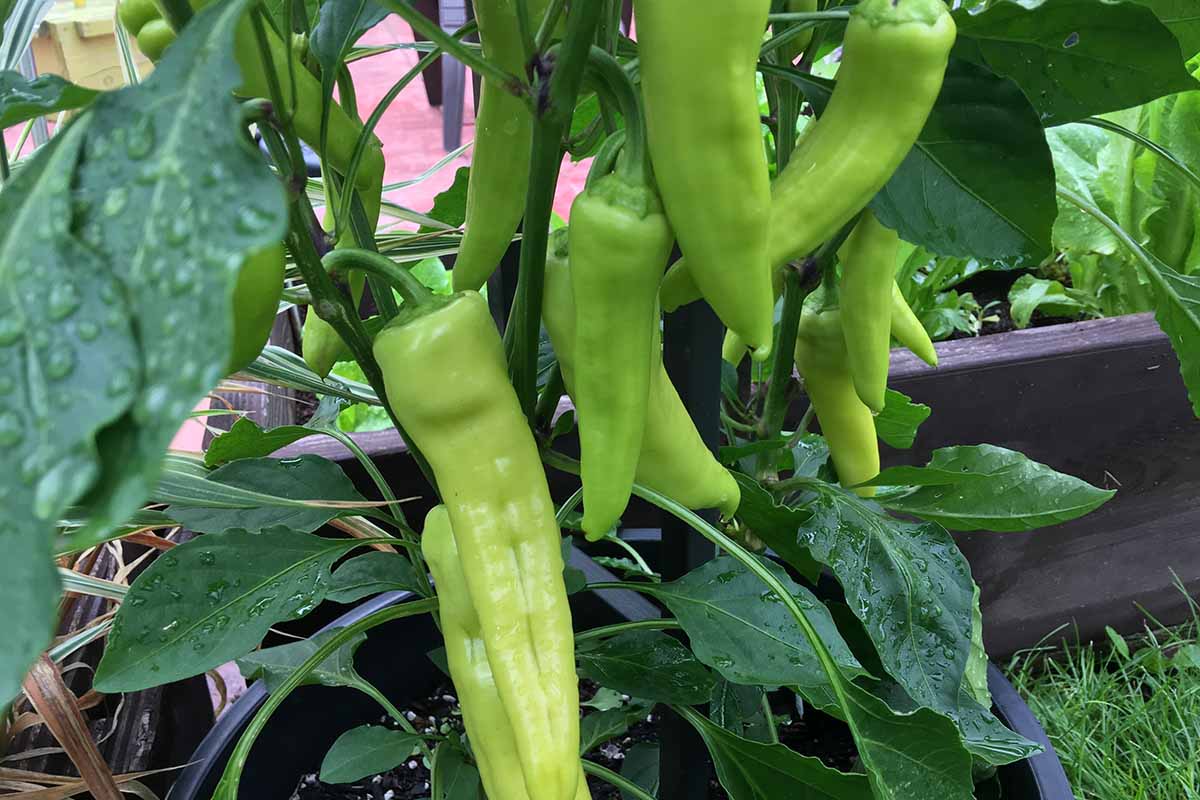
According to archaeological findings, humans were consuming wild peppers as far back as 7000 BCE and started to cultivate them around 2500 BCE.
Different types of C. annuum have earned the common name banana pepper, thanks to their five- to six-inch tapered fruits that are pale yellow at the earliest stages of ripeness. If you leave them on the plant, they’ll eventually turn red.
These have thin skins that are glossy and waxy, and thick flesh. When mature, they produce a few dozen seeds.
They also produce heavily. You can expect at least 30 fruits from each plant and sometimes more!

Banana peppers divide into sweet varieties, which have little or no heat, and hot varieties, commonly called hot wax peppers which originated in Hungary. The flesh of the Hungarian types is as hot as many southwestern chilis, registering between 5,000 and 10,000 on the Scoville scale.
That makes them a little hotter than jalapenos, with about the same heat level as chipotles.
The Hungarian types also ripen to a light yellow hue once they reach harvestable size, but they then continue to develop more heat as the fruit changes color from dark yellow to orange and finally a vibrant red.
Both hot and sweet types share the same growing requirements and produce quickly, with fruits ready to harvest some 60 days from transplant.
Banana peppers most likely descended from the wild American bird pepper Columbus brought to Europe from the Americas in the late 1400s.
Those varieties became popular across Europe, and a Hungarian variety bred in the 1930s came back to the United States around that time, with the ‘Hungarian Hot Wax’ cultivar introduced around 1941.
In the kitchen, you’ll want to treat the two varieties in completely different ways. The sweet banana varieties are more suited to salads and pickling, while the hot types will spice up all manner of dishes – and scald your taste buds if you’re not cautious.
If you’re a pepper lover who appreciates low-maintenance vegetables or you’re contending with a short growing season, banana peppers could be your top pick for the garden this summer.
Let’s get a closer look.
Propagation
Because banana peppers are widely adapted to growing conditions in all continental USDA Hardiness Zones, you can likely find transplants at a local nursery or order them online.

You’ll be able to grow more varieties if you start the plants from seed, though, and sowing your own is usually more cost-effective.
Remember, the 60 to 65 days it takes banana peppers to start producing ripe fruit are calculated from transplant, not from when you start the seeds.
Sow seeds indoors at least eight weeks ahead of transplanting out.
You’ll need a bottom tray, shallow or multi-cell biodegradable or plastic trays that allow for drainage that will fit inside, and a sterile mix formulated for seed starting.
Since the plants will be growing indoors for an extended period of time and they will develop a vulnerable root ball, I plant them in silicone seed-starting trays that allow you to gently push the seedlings out from the bottom to transplant.

You can find sets of five 12-cell reusable silicone trays from Rycia via Amazon.
Sow the seeds a quarter of an inch deep, and keep the medium moist until germination. It can help to cover the tray tops with plastic wrap or a humidity dome.
Banana pepper seeds require 70 to 80°F temperatures to sprout. If you’re like me and your house is nowhere near that warm, consider using a heat mat.
If you’re pressed for tabletop space, consider a waterproof, windowsill-sized heat mat like the three by 20-inch version available from AC Infinity via Amazon.
The seeds should sprout within seven to 10 days. If the temperature is cooler than 70°F, it could take a week or two longer.
Once the sprouts appear, remove the plastic cover or tray top. At that point, the seedlings need strong light and plenty of it – at least six hours a day from a grow light or a sunny window.
But you can turn off the heat mat. They’ll need 70°F daytime and 60°F nighttime temperatures to keep growing.
Transplant to the garden or containers when the soil outdoors is 60°F, but harden them off with progressive exposure to outdoor light and temperature first.
For best results, don’t just guess at the soil temperature. Instead, use a soil thermometer.

A reasonably-priced option is available from Vee Gee Scientific via Amazon.
Also, pinch any flowers that have already bloomed. Leave any buds on the plants, though.
Before placing seedlings into a garden, raised bed, or container, dig a hole a bit wider and about the same depth as the containers they’re growing in.
Gently remove transplants and place each root ball in the hole and backfill with soil.
If you used a biodegradable seed-starting cell, you can place it into the hole without removing the plant first. Just make sure the container edges are beneath the soil, or they’ll dry out and gum up the works.
Once your transplants are in the ground, give them a drink of water at soil level to avoid splashing the leaves.
Mulch around the seedlings with a two-inch layer of straw, pine needles, or other untreated mulch materials after they are in the ground to help retain moisture and inhibit weeds.
For more details on propagating from seed or nursery transplants, refer to our hot pepper growing guide.
How to Grow
When you hear a vegetable is “easy to grow,” remember that it needs a certain setup before the easy part starts.
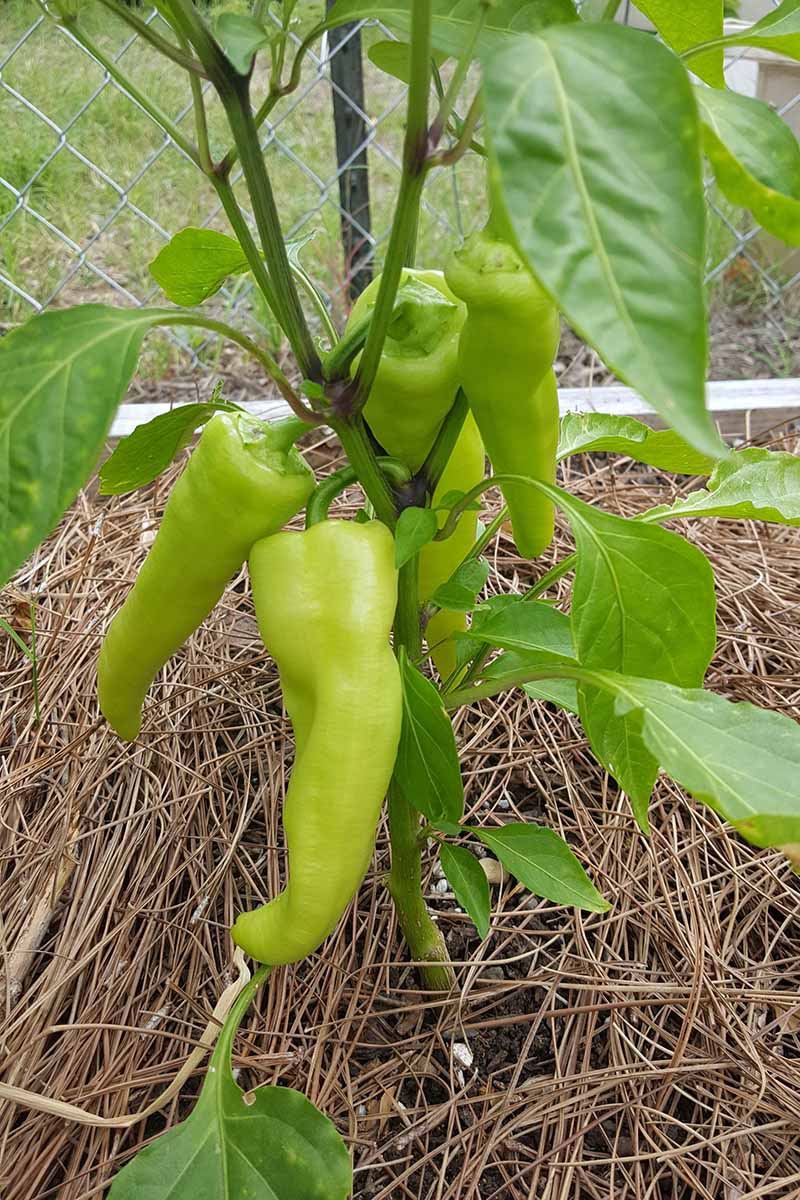
First off, to prevent transferring diseases or growing in depleted soil, these peppers will need a plot or raised bed where you haven’t grown them or any other members of the nightshade family in the previous two seasons.
That includes eggplants, potatoes, bell peppers, and all tomato varieties.
Banana peppers require full sun and well-draining, nutrient-rich soil amended with plenty of organic material.
A couple of good options include well-aged manure purchased locally, your own homemade compost, or a commercial variety.
I like Arbico Organics Compost Plus, available from Arbico Organics in one- or five-pound bags.
The soil should also be in the 6.0 to 6.8 pH range, with 6.5 pH being ideal. Use a soil test to determine your garden’s pH.
If you’re just starting a vegetable garden, read our guide for the first steps to take.
Even though both Hungarian hot wax and sweet banana types are well adapted to many growing areas, and are the best producers in cooler weather compared to similar pepper varieties, don’t press your luck.
Make sure to only plant these C. annuum varieties once the soil has warmed to at least 60°F and the night air is reliably at or above 50°F.
Space them 18 to 24 inches apart, or 12 to 15 inches apart for the compact types, in rows about 18 inches apart so you can harvest easily.
Choose containers that are at least 12 inches wide, and that will hold at least three gallons of soil.
If you’re going to grow a larger variety that can reach four feet tall, consider installing supports when you transplant. A tomato cage or simple stake with fabric ties is usually sufficient.
Burpee also sells supports specifically for peppers and eggplant.
As the season progresses, your focus will shift to keeping the plants watered, suppressing and eliminating competitive weeds, and fertilizing.
Ideally, the rain will provide the plants with one to two inches of water each week in the summer’s heat. If rainfall is not sufficient, supplement by watering at the soil level, not from overhead.
To suppress weeds and retain moisture, mulch a couple of times each season, leaving space so the mulch doesn’t touch the stems or leaves.
Every three or four weeks, feed the plants with 5-10-10 (NPK) fertilizer or tomato food, following the package instructions.
You may be surprised to learn that the weather can get too hot for these C. annuum varieties. Below 55°F, their growth will falter, but above 85°F the blossoms may drop, and they’ll stop producing fruit.
Watch for soaring temps and be sure to provide some shade via shade cloth or even umbrellas as needed.
If you live in an area with scorching summers, you may want to compensate by planting peppers in containers you can move around when they need cooling off, or by planting them where you can erect a part-time gazebo or awning as needed.
You’ll also want to monitor for pests and disease. These plants are vigorous, especially compared to the host of pickier hot pepper varieties.
You can help them to be even healthier by providing ample space for air circulation, rotating where you plant peppers and their nightshade relatives each season, and providing suitable drainage.
But you should still watch for certain insect and gastropod pests. Our guides offer detailed information on detecting, preventing, and eliminating aphids, flea beetles, slugs and snails, and thrips.
A few diseases can also prevent your banana peppers from producing those pecks you’d like to pick.
Powdery mildew, which looks just like it sounds, can wreak havoc. It will usually succumb to neem oil or an appropriate fungicide. Learn about home remedies and preventing powdery mildew in the first place in our guide.
Bacterial leaf spot is caused by Xanthomonas campestris, which usually arrives via infected seeds or transplants.
Be sure to buy from reliable vendors since this disease may damage your plants to the extent that you have no option but to uproot and destroy them.
Another issue that may crop up is a physiological condition rather than a pathogenic ailment. Insufficient calcium uptake caused by a soil pH that’s too low or inconsistent watering can lead to blossom end rot. This condition creates sunken bruises on the ends of the fruits.
When you’ve set up your garden patch properly and made certain to meet all the banana pepper growing requirements, you’re likely to have an easy, carefree experience.
After a few months, all that’s left is harvesting the fruits. I’ll cover that joyful prospect next.
Growing Tips
- Choose a garden spot where you haven’t grown other nightshades in the previous two seasons.
- Only transplant seedlings when low nighttime temperatures are reliably above 50°F.
- If rain doesn’t supply it, give plants at least one inch of water per week.
- To avoid disease, water at the soil level instead of above the plants’ leaves.
Cultivars to Select
It’s so encouraging to see so many sweet and hot banana pepper varieties that have emerged in the past couple of decades. Breeders have produced compact varieties for container gardens and a wide range of colors and heat levels.
Most people either love or loathe hot peppers, so it’s important to know whether a seed packet contains a hot or sweet variety before you get to sowing.
The same goes for transplants!
Eye that label and also ask any in-person vendors to provide additional detail about what you’re buying, especially if you’re purchasing from a roadside stand or someone at the farmers market.
Since peppers cross pollinate very easily, those grown from saved seeds may be hotter or more mild than you were expecting!
Once you get the starts home or plant the seeds, make sure to label them carefully and keep a record in your garden journal.
Many times vendors don’t specify a cultivar, only providing a notation of whether the seeds or plants are sweet or hot.
There are also a handful of named cultivars to consider, including:
Blazing Banana
Yes, that cultivar name is a strong clue. ‘Blazing Banana’ is hot alright, but it’s also known for its extra-long fruits, measuring seven to nine inches.
This hybrid resists that annoying bacterial leaf spot. Plants are tall and wide compared to some Hungarian hot wax types, attaining 45 to 50 inches in height and spreading 35 to 40 inches.
You’d need a seven-gallon container per plant, so this one’s better reserved for raised beds and garden plots.
‘Blazing Banana’ is available in three-plant mix-and-match bundles or 25-seed packets from Burpee.
Hungarian Hot Wax
This type is recommended for salsa and other Mexican dishes, and its fruits ripen from light yellow to vibrant red. It’s sometimes listed as ‘Hungarian Wax Hot Banana.’
Plants mature to a height of 18 to 24 inches, with a 10- to 16-inch spread.
‘Hungarian Hot Wax’ is available in a variety of packet sizes from High Mowing Seeds.
Mexican Sunset
An All-America Selections vegetable winner in 2018, ‘Mexican Sunset’ attains just 20 to 22 inches in height – ideal for containers or small-space gardens.
It still yields mightily, though, producing six- to seven-inch fruits over an extended season.
The fruits are hot and get hotter as they turn from yellow to orange to red.
The AAS judges noted that “the fruits just continue to taste better the riper they get,” so if you’re prone to delaying harvesting, this could be the variety for you.
‘Mexican Sunset’ seed is available in variously-sized packets and in bulk from True Leaf Market.
Sweet Banana
‘Sweet Banana’ is an heirloom cultivar that won the All-America Selections award in 1941. It produces five- to seven-inch fruits on plants that top out at 24 inches tall.
Ideal for grilling and pickling, the peppers are firm and mild.
Seeds are available in packets of 20 from Botanical Interests.
Sweet Sunset
A regional All-America Selections winner among vegetables and container plants in 2015, ‘Sweet Sunset’ is a compact plant that reaches about 28 inches tall with a 20-inch spread.
This means container gardeners can harvest enough of these sweet peppers from a few plants for a big batch of pickles.

Between their dark green foliage, pretty fruits, and compact height, they’re also attractive grown as part of an edible landscape or decorative patio planter.
Find 15-seed packets of ‘Sweet Sunset’ available from Park Seed via Amazon.
Managing Pests and Disease
Like all types of peppers, banana varieties can be plagued by pests. Deer and rabbits will generally leave them alone, but some insects love them.
Pests
Here are some of the most common pests found in home gardens:
Aphids
You’ll find the oh-so-common aphid making a meal of leaves and stems, using their sapsucking mouthparts to feed on the sap of your plants.
They leave behind a sticky substance called honeydew, which is not as pleasant as it sounds – particularly when it attracts black sooty mold.
Our guide to dealing with aphids can help you control these pests.
Flea Beetles
Flea beetles are a common pest of nightshade plants, and peppers are no exception. You’ll notice the holes they make in the foliage, and yellowing leaves.
You can learn more about managing flea beetles in our guide.
Spider Mites
Teeny-tiny, and not visible to the naked eye, you’ll notice a spider mite infestation by the webbing. These arachnids tend to appear when the weather is warm and dry, weaving their webs all over the foliage.
Learn more about spider mites here.
For a more in-depth look at pepper pests, check out our comprehensive guide.
Disease
There are a variety of diseases that can infect your plants, but in general, if you provide adequate spacing, employ sanitary garden practices, and rotate your crops, you’ve got a good chance of avoiding them.
Powdery mildew can be an issue in warm, humid conditions. This fungal infection spreads easily and is extremely common in the veggie patch.
Root rot, caused by fungal pathogens or water molds in the Phytophthora genus, is generally a result of oversaturated conditions.
You can learn more about diseases in pepper plants in our guide. (coming soon!)
Harvest and Storage
If your summer is zooming by, those peppers might ripen before you know it!
You can harvest them soon after they’re formed, but they’ll be a bit tougher and more astringent than they would if you wait until the fruits are five or six inches long.
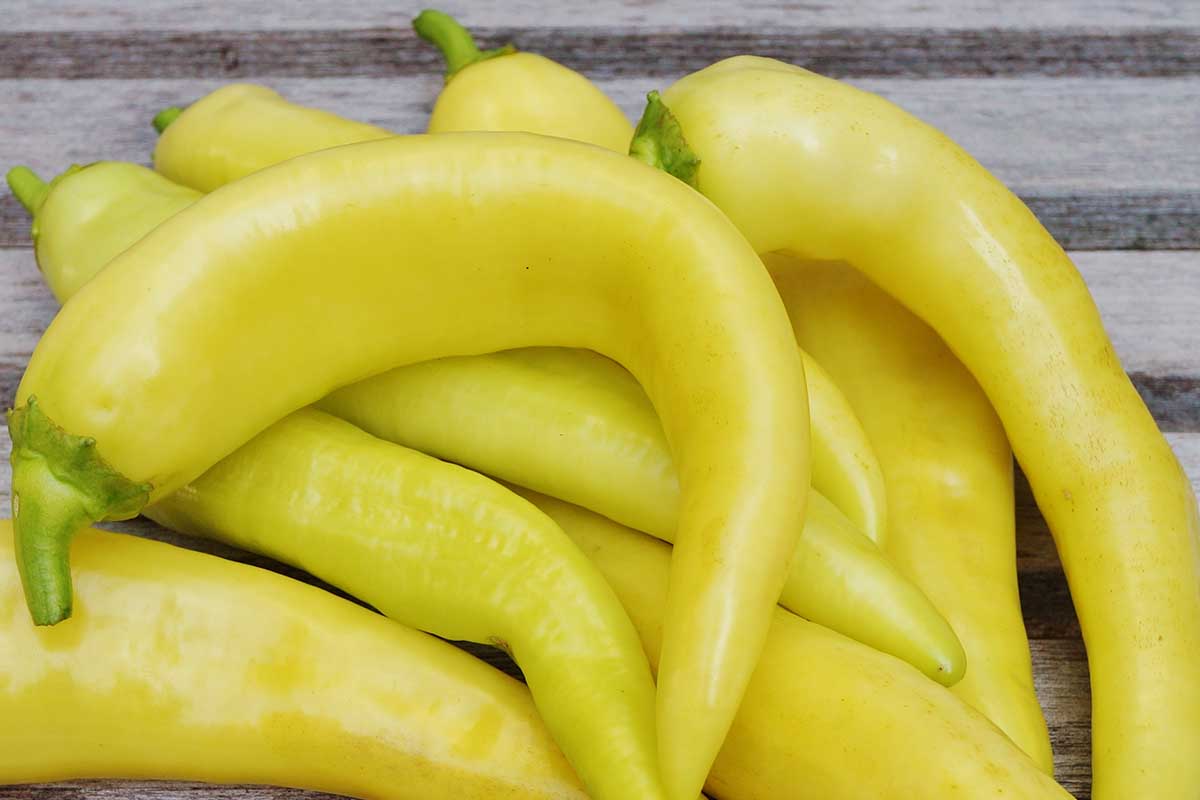
Unlike summer squash and cucumbers, it won’t hurt to let the fruits grow as big as you please – just don’t let them stay on the plants so long that they become overripe and mushy.
They’ll be light green while immature, then light yellow at their mature size. The peppers will become darker from there, and will turn orange and then progressively redder as they get riper.
The Hungarian hot wax varieties will become increasingly hotter when they’re left to turn red instead of being picked while they’re still light yellow.
It’s up to you what flavor and heat level you’d like, but be sure to taste a few fruits at every stage so you can gauge what you’re getting into.
It’s a good idea to taste test regardless, even if you’re positive you’ll be harvesting mild fruits from a bona fide sweet banana plant. Even the most reliable nursery can mix up the plants, or the seeds from a friend might be from plants that crossed with a hotter variety the year before.
You can ruin an entire hot dish or salad with just one banana pepper that turns out to be spicy when you’re expecting a milder taste.
If you’ve ended up with the type that’s either too sweet or too hot for you, remember that community food banks and other food-share organizations may be happy to put your extras to work, or the neighbors might welcome them!
I recommend using a sharp paring knife or clean scissors to snip the fruits. You can twist them off with your hands, but that might result in breaking stems or heaving the plant from the ground.
When harvesting hotter varieties, always wear gloves to keep the capsaicin from irritating your skin. And never, ever touch your eyes when you’ve been handling hot peppers! It’s dangerous!
You can store the fruits unwashed on the kitchen counter for a couple of days or in a bag in the vegetable crisper. Be sure to cook or preserve the refrigerated produce within a week, or it will get mushy.
You probably already have your own ideas for pickling this bounty or creating endless salsa and salad variations. For our suggestions, keep reading.
Preserving
You’ll be glad banana pepper plants are so vigorous and prolific when it comes time to preserve food for the winter.
To start with, you can freeze chopped or sliced pieces in the amounts your family is most likely to use. You should wash the fruits first and cut out the stem end, seeds, and membranes.

When you’re freezing Hungarian hot wax fruits, you can enhance or subdue the heat level by retaining or removing the membrane as you wish.
No blanching is required.
Place the pieces on a clean baking sheet and freeze until firm. Then collect them in freezer bags or airtight containers and store them in the freezer.
You can add the frozen pieces directly to chili, stews, rice, or other recipes. Don’t count on them for fresh eating: they’ll be mushy when you thaw them.
You can also pickle whole peppers or rings. While it may be tempting to forgo this chore and settle for inexpensive store-bought pickle slices, I can assure you the taste of fresh, homegrown pickles is far superior.
Plus, making pickles at home allows you to add the spices and vinegar you prefer.
I like to combine the banana varieties I grow with loads of garlic and smooth red wine vinegar. They pep up hoagies and paninis, and I couldn’t do without them as a nacho topping.
We eat a lot of nachos around here, so I’m glad I also grow a bounty of peppers to preserve as an ingredient!
For basics on home pickles, turn to our sister site, Foodal.
Now, even though they are red and hot, don’t expect to dry great strings of the hot wax peppers, Southwestern style. Their flesh is too thick and watery for that approach, but you can mince and dehydrate them.
And don’t forget the dehydrating option for the sweet varieties, either. You need not cook banana peppers ahead of dehydrating them, which makes them convenient to preserve on their own or add to dehydrated soup or salsa mixes.
We have a guide that provides step-by-step instructions for dehydrating homegrown vegetables.
Recipes and Cooking Ideas
These have their own distinct flavor, particularly when you grow the hot varieties, but you use banana peppers in a range of recipes that call for bell, frying Italian, or many varieties of chili peppers.
I like to keep a small container of diced peppers handy in the vegetable crisper so I can spoon them on ham on rye sandwiches.
It’s a nice change from iceberg lettuce and it won’t make the bread soggy. The mild versions aren’t as sweet as ripe bell peppers, but they’re delicious raw in salads or salsa as well.
You can also experiment with cooked sweet types in stir fry or grilled sausage-and-pepper hoagies, or add hot wax varieties to enchiladas, nachos, and chili.
Just remember the hot ones will pack more heat if you don’t remove the membrane. For medium-hot flavor, scrape out just a portion of the membrane.
You’ll want to tinker here, using what you harvest as a substitute for other types of peppers and then adjusting the seasonings and amounts of your homegrown vegetables until you’re happy with the taste.
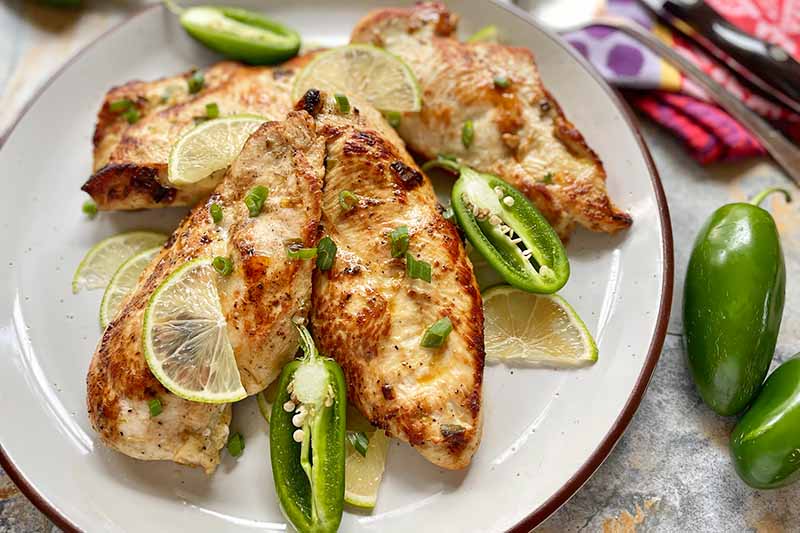
For example, you could use a couple of hot wax peppers in place of the jalapeno called for in this jalapeno-lime marinated chicken recipe from our sister site, Foodal.
Or, chop a couple of milder banana peppers to use in place of the sweet bell called for in Foodal’s recipe for sweet potato hash with peppers and onions.
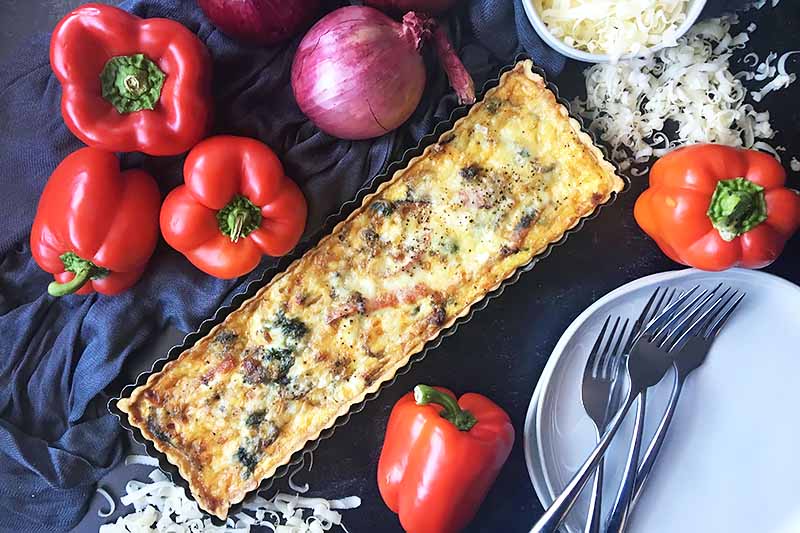
Your fresh produce can also spice up a dish like this gruyere quiche with red pepper from Foodal.
The final dish won’t be quite as sweet, but it will have its own delightful flavor, and you’ll have a sublime way to put ingredients you grow yourself to good use.
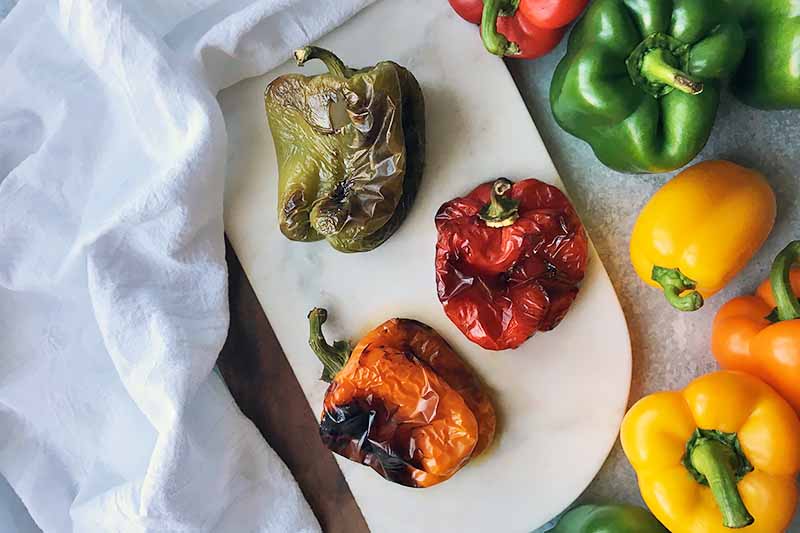
Banana peppers can also be roasted, following the tips in Foodal’s guide.
Try them as a substitute for the poblanos in Foodal’s recipe for roasted cauliflower enchiladas with a peppery cream sauce.
If you roast a few and you’re in the thick of harvest season, go ahead and make more than you need. Cool the extras to room temperature and store them in the fridge for up to four days.
Use them up in egg dishes, sauces, pasta salads, or Mexican rice over the course of the week. It’s a treat to have them on hand, and of course, the plants will quickly produce more until season’s end.
Quick Reference Growing Guide
| Plant Type: | Perennial vegetable (grown as an annual) | Water Needs: | Moderate |
| Native To: | Caribbean, North and South America | Maintenance: | Low |
| Hardiness (USDA Zone): | 9-11 | Tolerance: | Drought |
| Season: | Summer | Soil Type: | Organically rich, sandy loam |
| Exposure: | Full sun | Soil pH: | 6.0-6.8 |
| Time to Maturity: | 60-70 days (light yellow), 65-80 days (orange to vibrant red) from transplant | Soil Drainage: | Well-draining |
| Spacing: | 18-24 inches, 12-18 inches compact varieties | Companion Planting: | Alliums, basil, dill, okra, sunflowers, sweet alyssum |
| Planting Depth: | 1/4 inch (seeds), depth of root ball (transplants) | Avoid Planting With: | Brassicas, nasturtiums, other members of the nightshade family |
| Height: | 18-48 inches | Family: | Solanaceae |
| Spread: | 18-24 inches, 12-18 inches compact varieties | Genus: | Capsicum |
| Growth Rate: | Fast | Species: | Annuum |
| Pests & Diseases: | Aphids, cutworms, flea beetles, leaf miners, pepper maggots, slugs and snails, spider mites, thrips, whiteflies; bacterial leaf spot, blossom end rot, fusarium wilt, phytophthora blight, mosaic virus, powdery mildew, root rot, verticillium wilt | Cultivars: | Blazing Banana, Hungarian Hot Wax, Mexican Sunset, Sweet Banana, Sweet Sunset and others |
Orange You Glad You Grew Banana Peppers?
I return to growing Hungarian hot wax and sweet banana varieties year after year.
While I prefer denser bell peppers for crudite or stuffing and cayenne as a hot option to dry and cook with big pots of beans, easy-grow banana varieties are versatile and reliable.
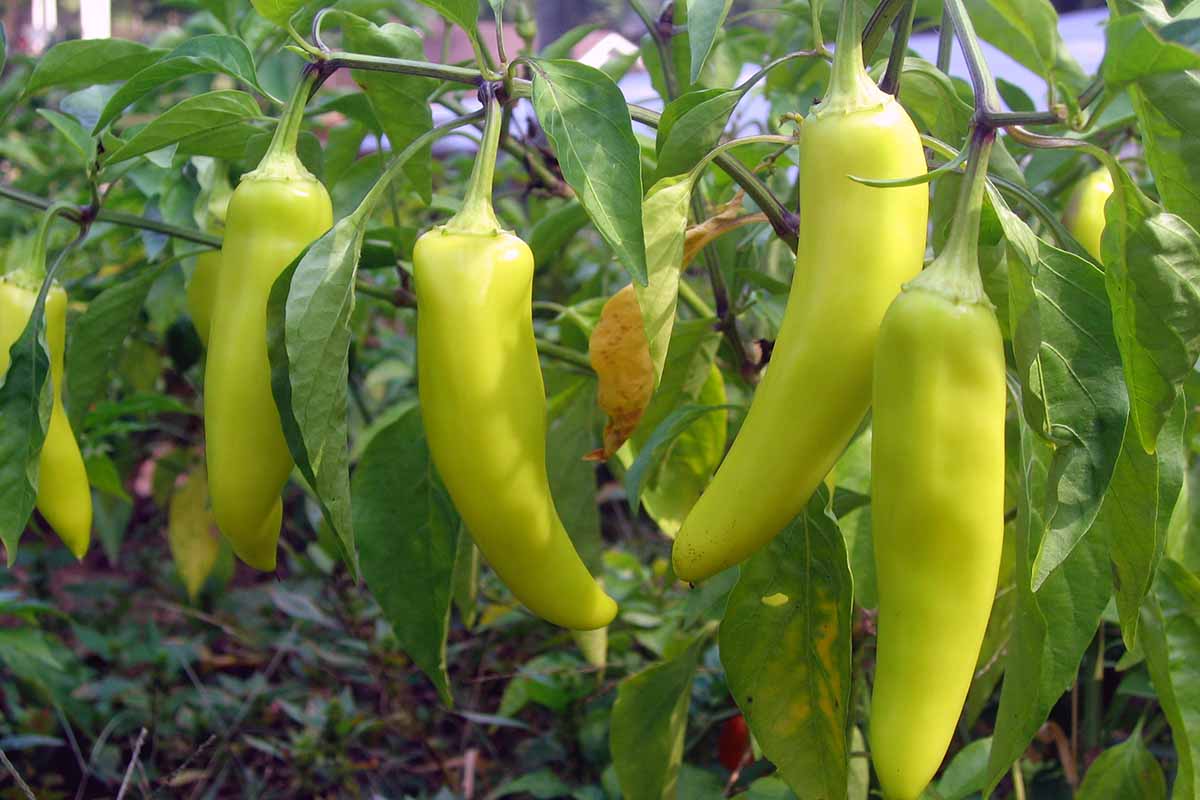
In some seasons I plant dozens and don’t bother with other sweet or hot cultivars; in others, I plant just a few as a failsafe, so I’ll always have at least some sweet and hot peppers available for salsas and soup.
I chop gallons of the harvest to freeze or add to our family’s popular chow chow recipe, and if there are any hot ones left over, I steep them in vinegar for a handy hot sauce.
The list of ways to enjoy the harvest goes on and on.
Speaking of lists, do you have any experiences with banana peppers to add to the comment section below? Kindly take the time to share your opinions and ask questions, too.
And if you found this information valuable, check out these homegrown pepper guides next:
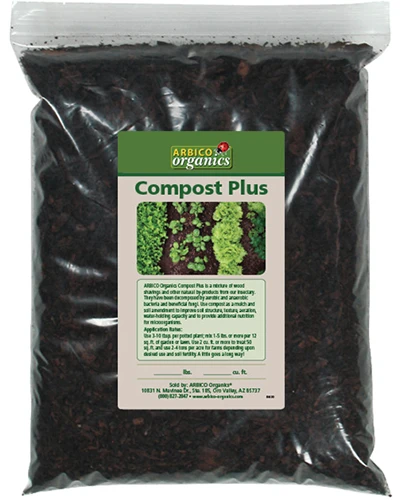
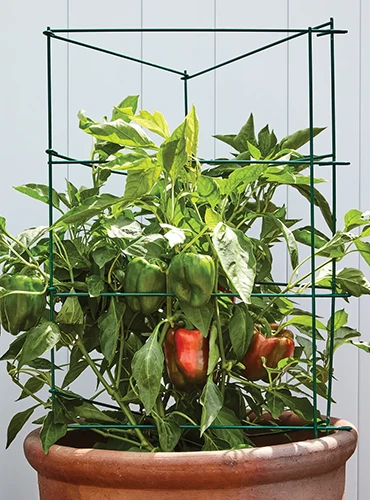
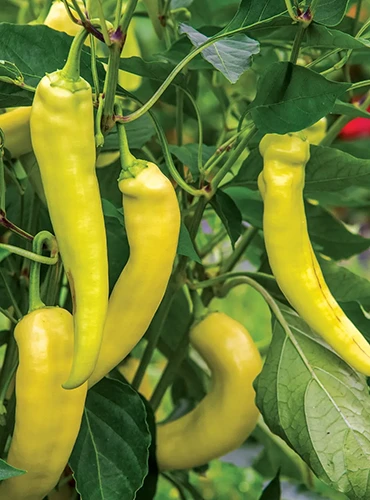
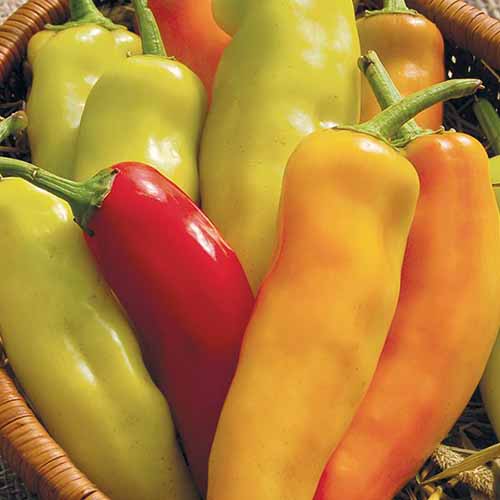
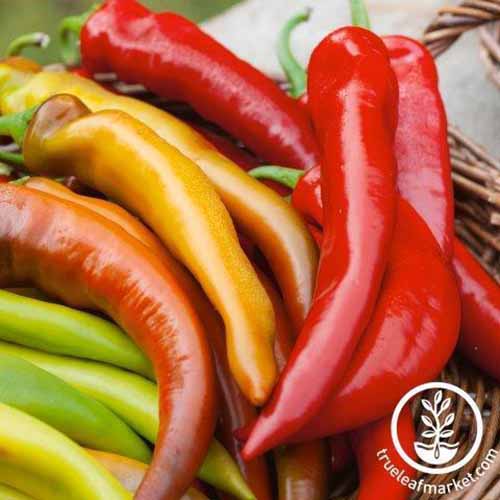
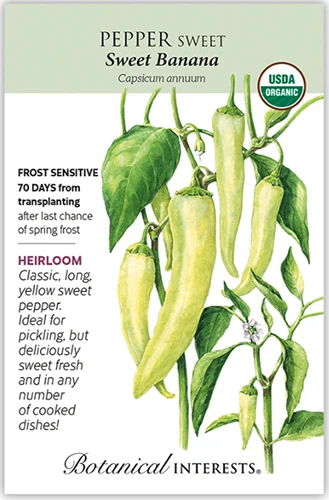


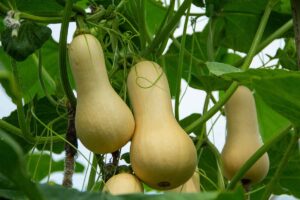
Very beautiful